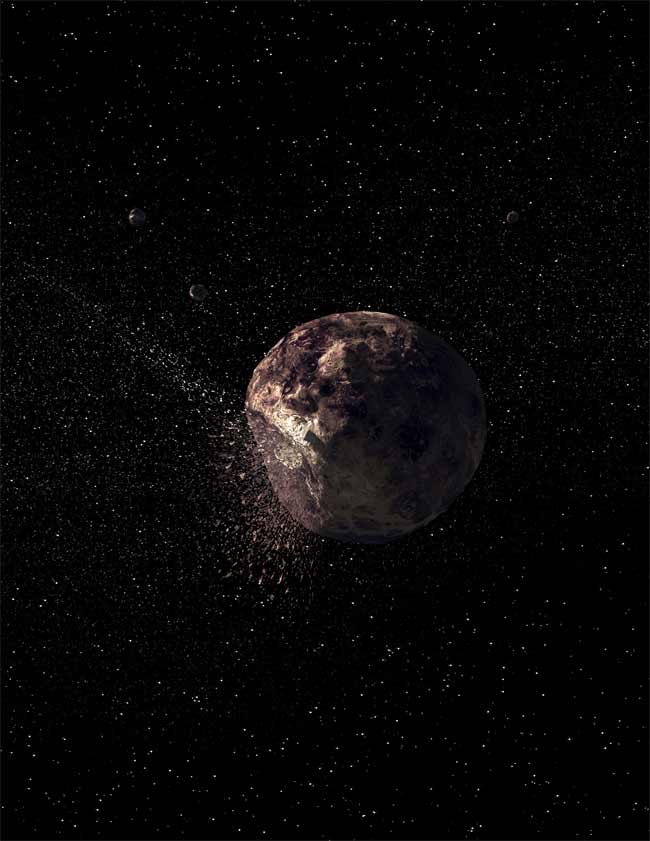Asteroid Looks Like Planet Wannabe

A large asteroid in our solar system called 2 Pallas isactually a protoplanet - a moon-sized body that might have formed into afull-sized planet under different circumstances, scientists report.
2 Pallas, with a diameter of 165 miles (265 km), is one ofthe largestbodies in the asteroid belt between Mars and Jupiter. A recent study of theobject's surface and shape based on data from the Hubble Space Telescopesuggests that 2 Pallas is more dynamic than the chunks of rock that make upmost of the asteroid belt.
"When you think asteroid, you think a small rubblepile, and this isn't that," said study leader Britney Schmidt, aplanetary physics graduate student at UCLA. "These objects are transitionsbetween planets and asteroids. They're almost like mini planets."
Although not perfectly round, 2 Pallas has enough gravity to have become almost a sphere shape, much rounder than most of the rocky asteroids around it.
2 Pallas now joins two other large asteroids, Ceres andVesta, which have also been called protoplanets.
The researchers think that objects like this might havedeveloped into regular planets if it weren't for the particular gravitationaltugs of Mars and Jupiter, which kept most of the material in the asteroid belt in the form of rubble.
"Because of where they are in the solar system, in thatregion the gravity is such that those asteroids could never quite conglomerateinto a larger planet," Schmidt said.
Get the Space.com Newsletter
Breaking space news, the latest updates on rocket launches, skywatching events and more!
This fluke of fate means these objects offer a peek into theformative era of the solar system.
"They were certainly like the buildingblocks of the larger planets," Schmidt told SPACE.com. "Theyallow us to almost take a photograph of how planet formation was happening inthe early stages of the solar system."
In fact, the researchers think that 2 Pallas has remainedintact and largely unchanged since its birth long ago. One of its intriguingfeatures is the fact that the protoplanet seems to have hosted water in itspast.
"Pallas' surface is covered by hydrated material that seemsto indicate that the object had a lot of water at one point in time,"Schmidt said. "It's possible that it still does."
This water would likely be in the form of ice buried underthe surface today, she said, though there is a chance 2 Pallas may have once hadliquid water oceans.
The new study is detailed in the Oct. 9 issue of the journalScience.
- Video - Asteroid Hunting
- Video - Killer Comets and Ominous Asteroids
- Images: Asteroids
Join our Space Forums to keep talking space on the latest missions, night sky and more! And if you have a news tip, correction or comment, let us know at: community@space.com.

Clara Moskowitz is a science and space writer who joined the Space.com team in 2008 and served as Assistant Managing Editor from 2011 to 2013. Clara has a bachelor's degree in astronomy and physics from Wesleyan University, and a graduate certificate in science writing from the University of California, Santa Cruz. She covers everything from astronomy to human spaceflight and once aced a NASTAR suborbital spaceflight training program for space missions. Clara is currently Associate Editor of Scientific American. To see her latest project is, follow Clara on Twitter.









